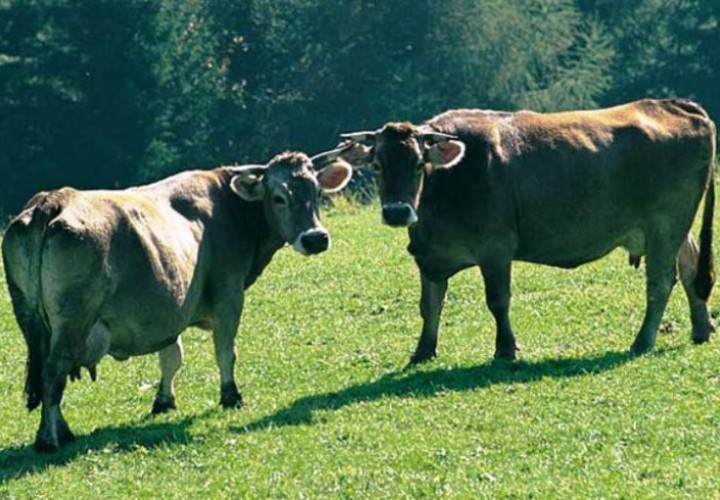Rearing of goats and cows

At one time only goats were reared in Erto. The land was covered mostly by woods and the few pastures were obtained by laborious deforestation. Because of this, natural grazing on high land above the woods was fully exploited. The free land around the inhabited parts was used for sowing and the few pastures were for collecting forage for the winter.
Then when the pastureland started to become quite vast, the rearing of alpine cows was started (alpine grey and then alpine brown), animals low in stature but suitable both for the production of milk and meat and resistant to the harsh climate of this area.
The goats and cows did not share the same pastures and not even the same summer grazing.
The goats were taken to higher altitude, tended by a shepherd (especially boys) and at night enclosed in the "tàmer", fences of stones and wood.
Instead, the cows were taken in "mònt" that is on the first pastures before those at mid altitude, then when the grass became scarce on the higher altitude on the boundary of the wood. The young cows (màndhe) were separated to take them to different grazing called "mandhre".
Both the goat pastures and those of the cows were collective property (vicìnia).
Once descended to the valley, they were grazed for a further brief period in the village, the goats still in a "tàmer" while the cows were in a "tavèla". Still today the various place-names reveal the places of this ancient activity.
Little by little cattle raising took the wind out of goat rearing.
In 1872 the lands around the village were divided into "sòrt" and then sold to the resident population, this allowed each breeder from September to June to produce dairy products for himself while in summer the beasts were sent to the mountain pastures.
